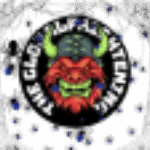Well, for this quick stand-alone “Horror Videogames Series” article, I thought that I’d talk briefly about a really interesting gameplay mechanic I’ve seen in no less than two isometric 2D survival horror games with historical settings – namely having to manually reload after every shot.
Both “Lamentum” (2021) – which I started playing the day before preparing this article – and “Conscript” (2024) both take place in historical eras where either single-shot or single-action guns were a lot more common. “Lamentum” (2021) technically takes place sometime during the mid-19th century, but the outfits/hairstyles/locations/weapons remind me more of the 18th century, and “Conscript” (2024) takes place during the First World War (1914-18).
Anyway, the interesting thing about many of the weapons in these games is that you literally have to press the “fire” button again after shooting in order to manually load the next bullet into your gun. With the flintlock pistol in “Lamentum” (2021), you’re even treated to an adorable animation of Victor – the main character – frantically shoving a ramrod down the barrel several times. Both games also contain an on-screen indicator which tells you whether or not you need to load your weapon. And this gameplay mechanic is weirdly perfect for survival horror games.

(Click for larger image) This is a screenshot from “Lamentum” (2021) – if you look carefully in the bottom right of the screen, you can see the small pistol ball next to the icon for the flintlock pistol. This tells you that the gun has been loaded and can be fired again.
One of the defining features of survival horror games that allow fighting is that virtually all fights take place at close-range – it makes the game frantic, intense and suspenseful, as well as being a hang-over from the glorious 1996-2004 heyday of “fixed camera” survival horror games, where the camera system made long-range battles impractical.
Because of this, the slow manual reloads really ramp up the tension because you can’t just rapidly fire five shots in quick succession or whatever. Instead, you have to fire once and then run to safety to reload. And, by letting the player choose when they load the next bullet, this adds an extra element of strategy too.
And strategy is important because survival horror games are all about making careful decisions. They aren’t mindless action games! So, by only giving the player one shot at a time, you have to think carefully about when to use it. It also makes you feel a bit less powerful, which is an important part of making the game feel a bit more scary and suspenseful too. Seriously, the very scariest survival horror games are the ones where you can’t fight (and have to run or hide instead) because there’s a huge power imbalance between you and the game’s monsters and/or villain.
Giving the player one shot – and a slow manual reload – is a really fascinating middle-ground between this and the more modern-style guns found in a fair number of survival horror games. It lets the game include guns whilst still keeping things suspenseful by not making them too powerful.
Not only that, it also encourages the player to use melee weapons as well. Melee weapons make survival horror games scarier because you have to get closer to the monsters or enemies – risking damage from them – whenever you use them. In games with a manual reloading system, melee weapons have an advantage because you can do more “damage per second” with them, but this is balanced out by the fact that you’re likely to take damage unless you’re very good at dodging.
It adds an “advantages and disadvantages” calculation to ranged and melee weapons which you don’t get in survival horror games where the guns are just objectively better than the melee weapons (such as the very first three “Resident Evil” games, where the one ultra-weak melee weapon is pretty much a punishment for not conserving your ammunition properly).
So, yes, whilst I’ve only seen this system being used in two isometric 2D survival horror games with historical settings, it’s really fascinating. It adds more suspense and strategy to monster encounters, it disempowers the player slightly and it also improves the balance between melee and ranged weapons too.
————–
Anyway, I hope that this was interesting 🙂





